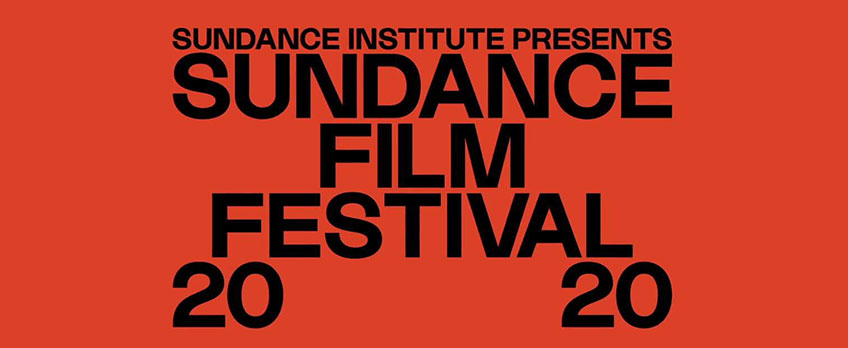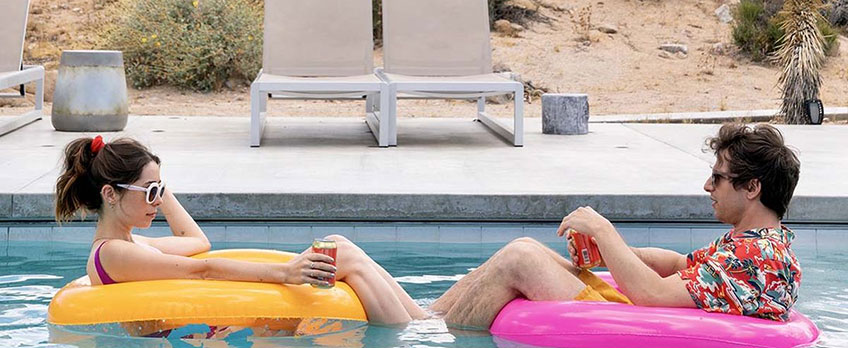Sundance 2020 Report

Nine Sundances in ten MIFF years for me; always an exciting place to be, and to see. It's one of the epicentres of the film and festival universe, where a lot stays the same, and a lot changes, not to put too pre-emptively nostalgic a point on it.
Park City, Utah’s annual film takeover (seemingly equally scorned and adulated over by locals, and embraced by Uber drivers, as the town grows from 8,000 to a festival population of 100k+) returned in 2020 with the news that it would be Director John Cooper’s swansong (also announcing Tabitha Jackson as incoming for the 2021 festival).
For us at MIFF, January and Sundance, in terms of our external festival scouting, represents a serious starting line of sorts for the year, program-wise. It’s a setting where its vast program majority of World Premieres announce it as a place for incredible discovery or breakout, or occasionally the mirror negative of those terms, the dreaded ‘buzz in a bubble’ that has seen some of the festival’s insular hype not translate to 'real world’ success in some of its biggest recent acquisitions.
Elsewhere, Sundance’s stature in docs has been formidable in ascent in terms of Oscar shortlist/nomination path in recent years, including the victory of American Factory this year, which premiered at Sundance in 2019, alongside other nominees launched at the festival such as Honeyland and The Edge of Democracy.
For me, I love Sundance for its simultaneous a-list and downhome festival qualities (there’s also a dollop of nostalgia each time I go – my first day on the job for MIFF was flying to this festival many moons ago). It may not go to the extremes of formal outré-ness that can be unearthed in settings such as Cannes, Locarno, or Rotterdam (although this is itself changing, in places such as the inclusion of Lemohang Jeremiah Mosese's This is Not a Burial, It's a Resurrection; elsewhere, Pedro Costa did make an appearance this year, and its New Frontier film setting continues to grow and impress in this direction), but it’s a place where, year to year, filmic lightning can genuinely, excitingly strike, from Beasts of the Southern Wild to Whiplash to many, many more in recent times.
It’s also a place which transcends its hoi polloi celeb status with the fact that its cinemas and screening venues are physical transformations of synagogues, hotel convention rooms, and an indoor racquet club among others (still functional during festival time I might add, I’ve seen a couple of people nearly be taken out by flying racquetballs while waiting in line during my time). Rather than take the wind out of the proceedings, the clash of that A-list factor filtered through an actual community (as opposed to the rigour of formalised and glamourised Palasts in other settings), can be a wonderful and welcoming thing, imbuing prestige with personality.
To the films, and this year’s Sundance program felt as overtly political on the page and onscreen as any in recent history and perhaps more so; its non-fiction programming particularly urgent in the cumulative sense of chaos, struggle and resistance it suggested is now the new normal for us to make sense of.
Elsewhere, there was a sense of response to mortality and things ending that might feel appropriate for a director's 'last' edition of a festival, and particularly in a couple of docs that look at senior communities - the Darren Aronofsky and Jeff Orlowski exec produced Some Kind of Heaven, brilliantly realised by 24 year old Lance Oppenheim, and Maite Alberdi's The Mole Agent, a gorgeous and generous doc in which an old world gentleman goes undercover in a nursing home.
For me, the standout highlight was undoubtedly Eliza Hittman’s new film Never Rarely Sometimes Always (she had of course come through Sundance previously with It Felt Like Love and Beach Rats), affecting and forthright and firmly establishing her as a major presence; I also had a lot of fun with Miranda July’s love story within a low stakes heist film within an absurdist dysfunctional family piece, Kajillionaire (also featuring Debra Winger!), and enjoyed the sense of almost gothic-styled family disintegration that Sean Durkin made with The Nest, his long awaited feature film follow up to Martha Marcy May Marlene, back in 2011.
Elsewhere I was devastated (in the best possible way) by Florian Zellner’s The Father. Adapted from his stage play, it’s a film that features an incomparable performance from Sir Anthony Hopkins - one of his career best - and portrays dementia and mental decline from the inside out in an approach that is empathetic, purposefully disorienting, and almost radical in its departure from the hackneyed dramaturgy of other screen depictions of this terrible disease. Elsewhere, also building in a very, very different way from a creative expression of dementia, it was so wonderful to see Australian Natalie Erika James’s Relic World Premiere to deserved acclaim and excitement in the Midnight section.
Within docs, the firebrand Ross Brothers presented Bloody Nose, Empty Pockets, an unclassifiable ‘constructed reality’ of the last 24 hours of a divebar in decline and its assorted nearest and dearest, both a masterclass in verite and something else entirely; and I settled in for four hours of Nanette Burstein’s Hillary (Hillary Clinton) documentary, an appropriately epic articulation of a defining political personality of the last 50 years (doubly fascinating when seen in the foreground of the impeachment trial and the Democratic debates that were both happening simultaneously to the film launching at Sundance).
A shout out as well to Brandon Cronenberg’s (yes, son of) supremely nasty but undeniably striking Possessor, that sees Andrea Riseborough go up against Christopher Abbott in a gore-laden tale of body-jumping assassination, and Fernanda Valadez’s powerful and affecting Identifying Features, which charts a mother’s determination to find the fate of her son following a bus hijacking en-route to the Mexico-US borderline.
The biggest breakout of the festival (if we’re talking pure dollar terms from the festival’s acquisition side, always the subject du jour among the P+I line and the film trade press in broad) was the Lonely Island’s Palm Springs, a terrific Andy Samberg starring crowd-pleaser, which broke the previous record ($17.5 million) for Sundance’s biggest acquisition (purposefully priced for this effect, it seems, given Neon and Hulu bought it for the reported price tag of USD$17.5 million and 69 cents - although apparently the real cost may also have been even higher, other lines of report say). The film itself is outright comedy gold, riffing directly on a high concept Groundhog Day setup (or as Samberg’s character puts it, one of those “infinite time loop situations you may have heard about”), but also managing to be clever, inventive, philosophical and downright hilarious in its own right.

Palm Springs
That’s a brief and shallow dive through Sundance 2020 – amazing films, strange altitudes, an undeniably variable quality of burritos. We look forward to bringing you amazing highlights from this festival, and from the whole year of film, and world of film, to MIFF this year. Next stop – Berlin.
Al Cossar
Artistic Director, Melbourne International Film Festival